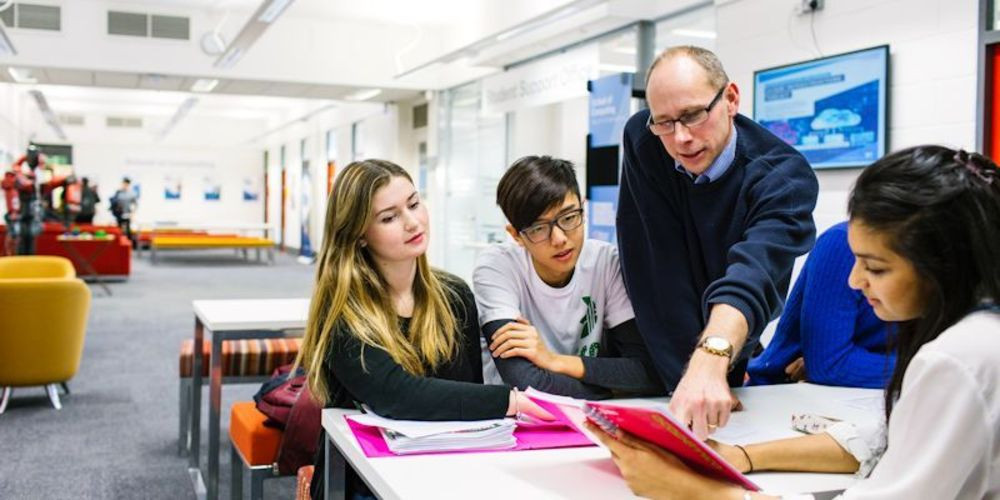Learning to understand ratings: how the lists of the best schools in the UK is made
10.10.172352
Annually, the Department of education in the UK publishes the results of the final exams received by students in secondary and high schools across the country. The report lists more than 5,000 schools with the results of GCSE and 3,000 schools with the final grades at A-level. These data are used by publications to create rankings of the best British schools. Although many experts in the field of education does not recommend the use the results of the final exams for schools comparison, the ratings can be useful when choosing a school for your child.
We will examine how rankings of schools is made by these three respected publications in the field of education and find out how to use this data when searching for the best school for your child.
Rankings of British schools, compiled by The Telegraph
The Telegraph, a British newspaper, which began its history in the early 1855. Each year the publication produces three comparative ratings, which allow anyone to find a school, analyzing data tables. The ratings are based on the results of three exams: at the age of 11, age 16 (GCSE) and 18 (A-level or equivalent).

Let's look at the rating of The Telegraph on results of A-level. Page school at the rating displays the average rating of students, the average score on the test, and the percentage of A-level students who have passed 3 subjects with the assessment of AAB and above. Average score is calculated by replacing the evaluation points. So, estimate A* is 300 points, A – 270, B – 240, D – 180, E – 150. Then the sum divided by the number of students who pass the tests. Thus to display the average score of the school.
For the ranking of schools by GCSE results, calculates the percentage of pupils who achieved at least 5 grades from A* to C, along with key subjects like English and mathematics. GPA points are calculated similarly by translating the evaluation scale points. Evaluation of A* – 58 points A – 52, B – 46, C – 40, D – 34, E – 28, F – 22, G – 16. For GCSEs in 2010 the government introduced a performance indicator EBacc (English baccalaureate). It shows how many students got grade C and above in core subjects GCSE – mathematics, English, Sciences, history and geography. This figure is included in the ratings of schools prepared by the newspaper The Telegraph.
Rankings The Telegraph sounds like: "Top 100 secondary schools by exam results A-level 2015" or "Top 100 secondary schools by GCSE results 2015".
The Sunday Times School Guide

Searching base of this publication allows you to compare 2000 leading schools in England with exam results. Ranking of schools is compiled on the basis of GCSE and A-level in summer. The number of grades A, A* and B expressed as a percentage of the total amount received in A-level. Grades A*, A received for GCSE expressed as a percentage of the total number of assessments GCSE as a whole. The ranking of colleges, Sixth Forms is made by counting the ratings of A*, A, B at A-level in two or more subjects (English, mathematics, physics, chemistry, biology, history, geography, languages).
The Sunday Times has prepared ratings: "Top 400 independent schools", "Top 500 public schools", "Top 75 colleges Sixth Form", "Top 20 independent schools for Pre-U, Top 28 independent schools in Scotland (exams Highers/Advanced Highers, National 5)", "Top 7 independent schools in Scotland (exams A-level, IB, GCSE)" as well as the ratings of state schools in England.
Best-schools.co.uk
Portal best-schools.co.uk provides information about British private schools and prepares its ratings of schools, based on the results of internal examinations. The rating "Top 100 of co-educational boarding schools in the UK to 2016" was compiled from the percentage of A* and A in A-level exams. On the same principle portal produced ratings of "Top 20 boarding schools for boys", "Top 50 boarding schools for girls", the rankings of schools based on the results of exams GCSE and A-level. The portal also placed the ratings of Scottish schools, British schools, IB and College Sixth Forms.

Why schools have different positions in different ratings?
The above ratings indicate that the compilers use same information but different methods. They can take into account only excellent examination results GCSE/A-level or translate assessment scores and sum scores for the exam. Therefore, different rankings of the school will occupy different positions.
What to look for when choosing a rating for comparison schools:
- I recommend to pay attention to what ratings you are using. On some pages, the school can place the results in the context of regional rankings and not national, and therefore show higher position than is in fact;
- Keep in mind that different rankings use different methodology. I advise my clients to compare schools from one rating;
- The ratings are made on General subjects, which may not include such areas as art, engineering, business and so on. If you are interested in rating of school on a particular subject – look for the ratings of schools in the disciplines. The overall positive rating of the school will not always mean that your chosen discipline will be there to explore at a high level.
- I suggest to watch the trend of school ratings by year. If the indicators are on the decline – a reason to be concerned and to consider other educational institution.

Remember that the rating is just the arithmetic average of the training results. Important teaching staff, school atmosphere and comfortable learning environment that will directly affect the academic performance of your child. So I do not recommend to choose a school only based on its position in the overall ranking of British schools.




















